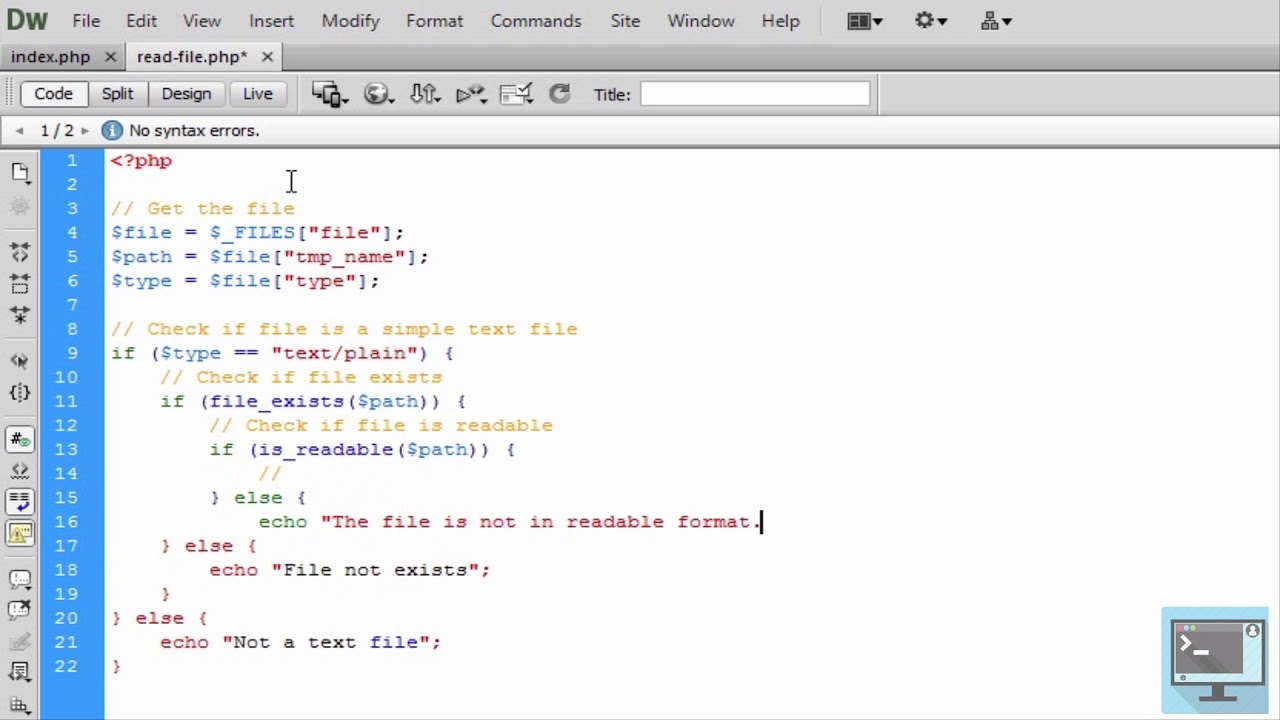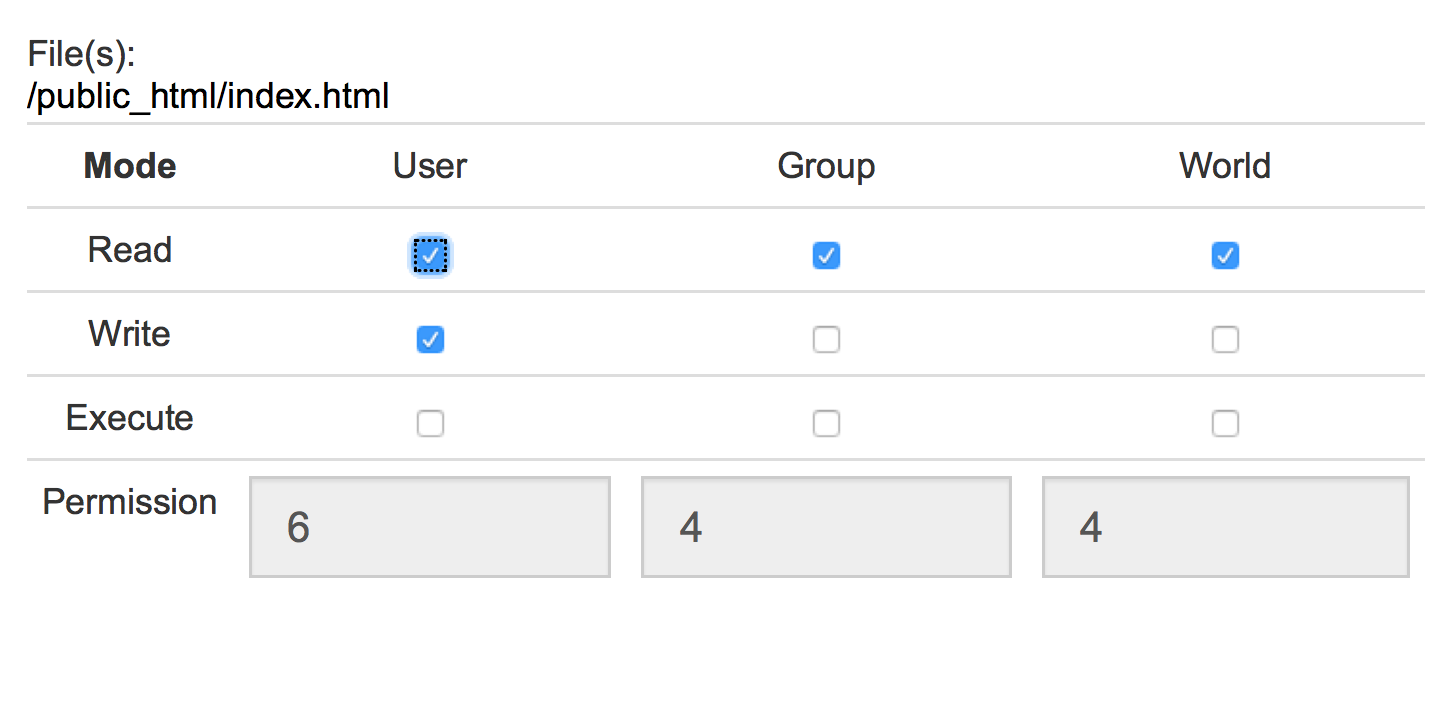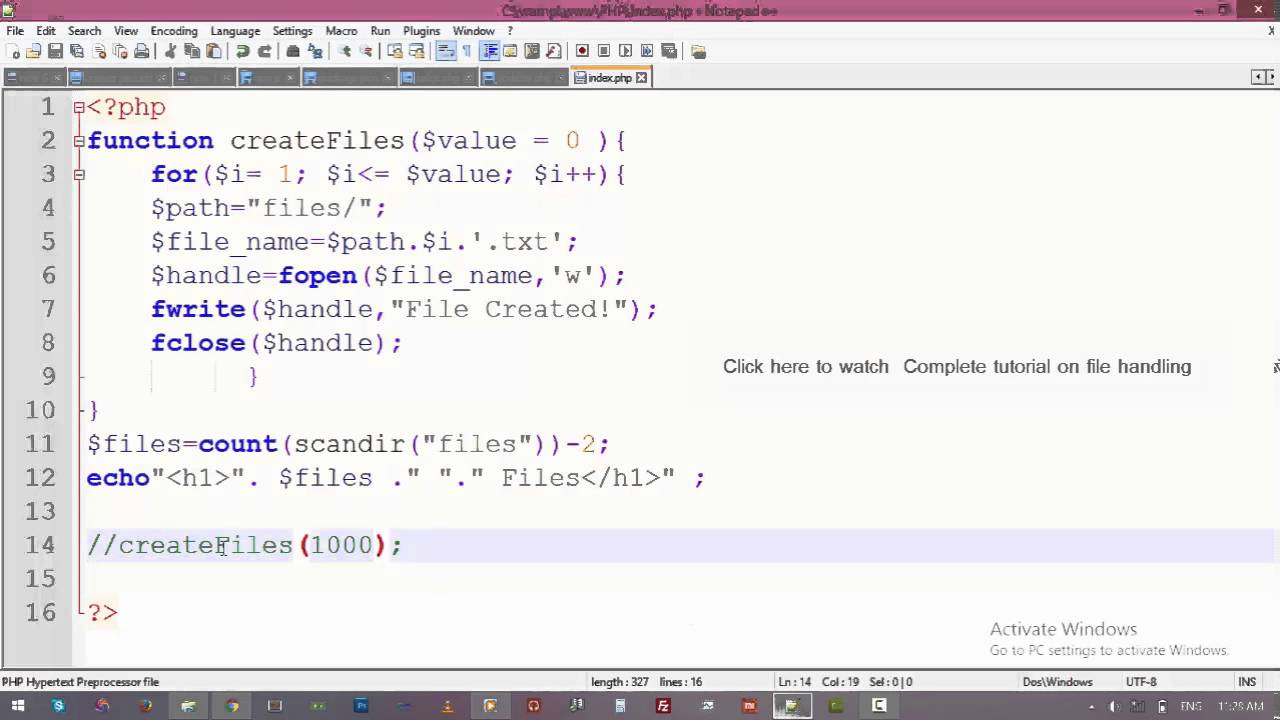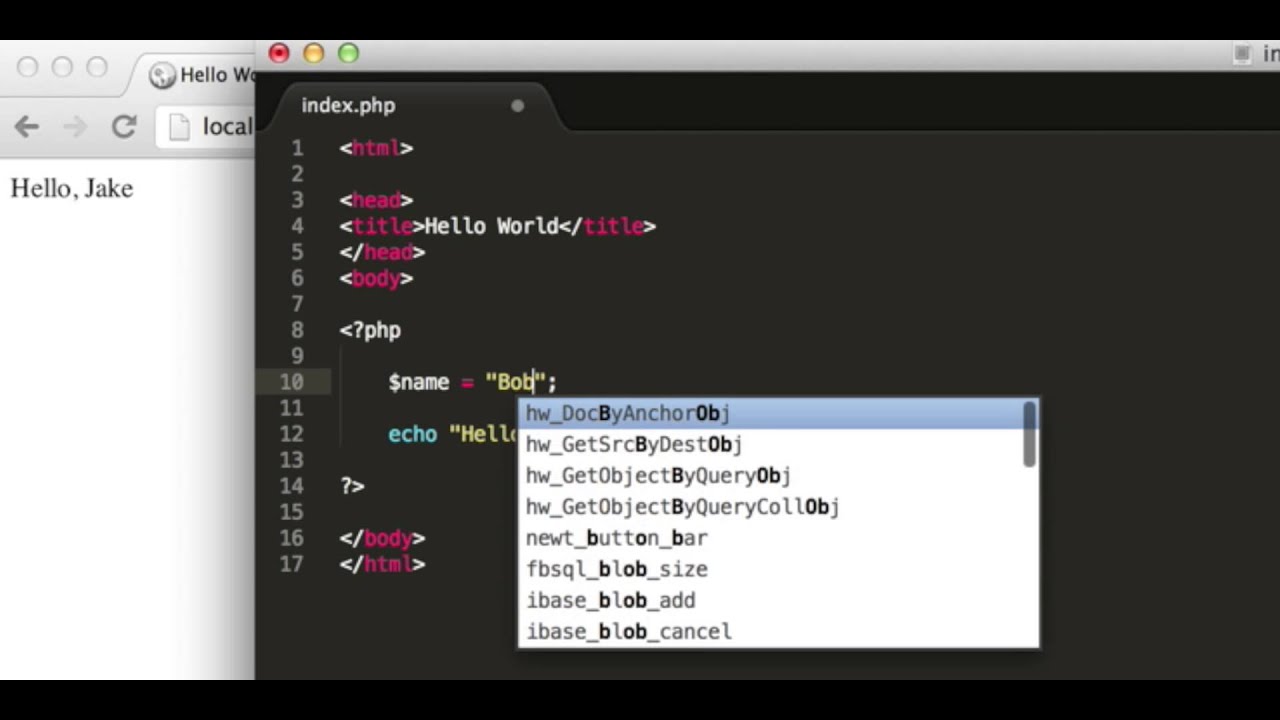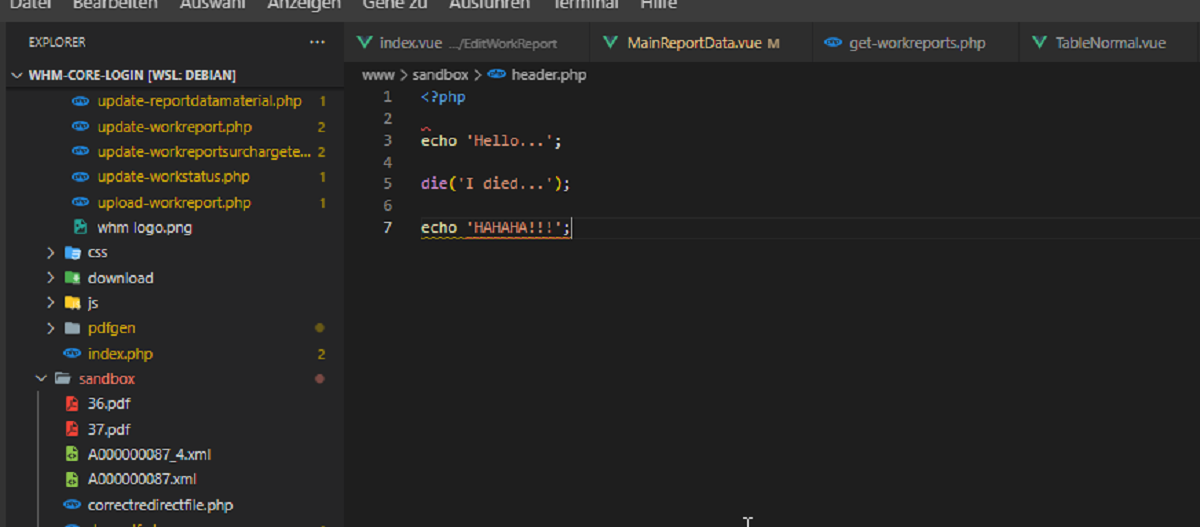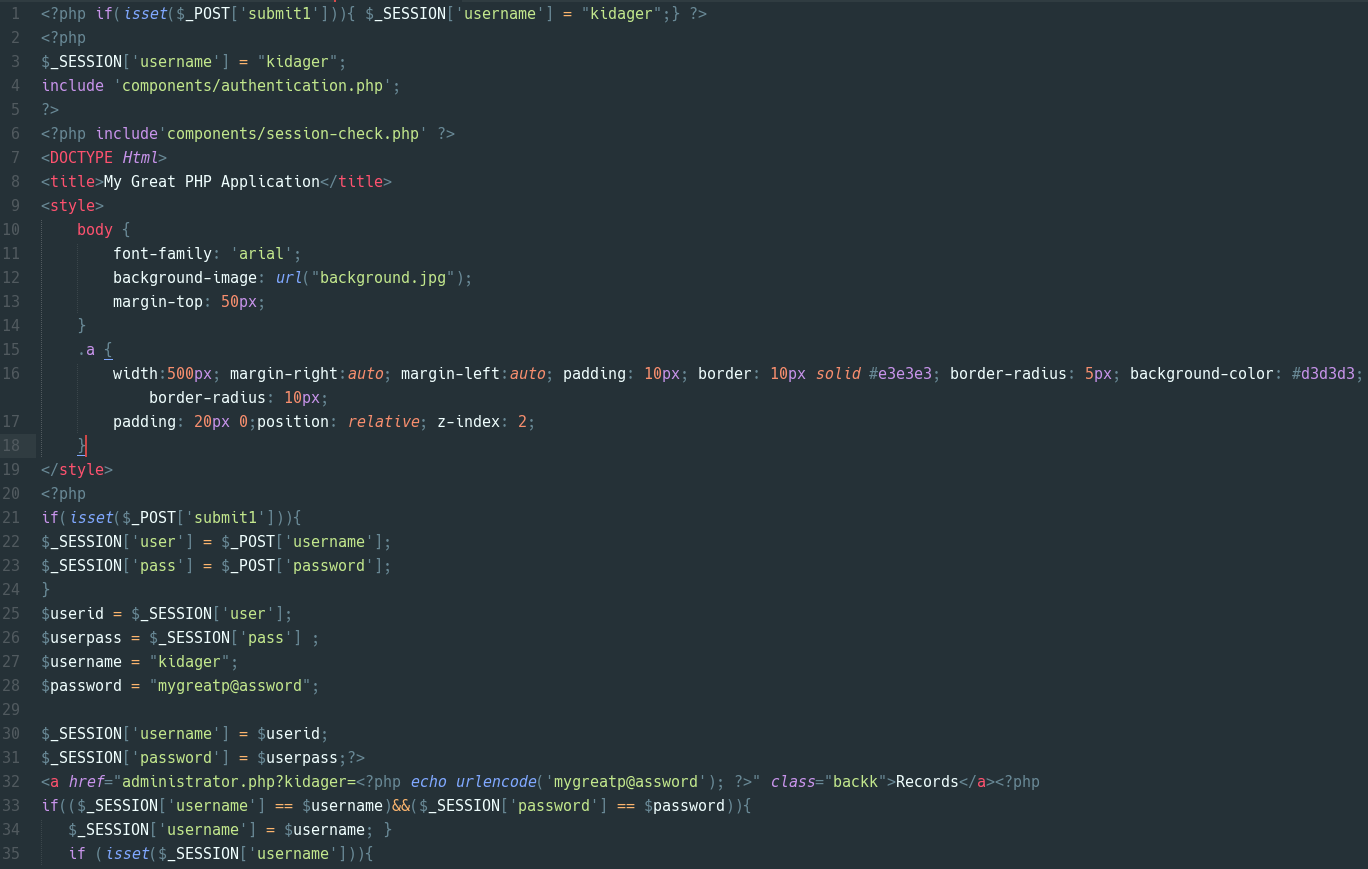Introduction
Reading from a file is a common task in PHP programming, especially when dealing with large amounts of data. Whether you need to retrieve and process information from a text file, CSV file, or any other type of file, PHP provides several functions and methods to accomplish this effortlessly.
In this article, we will explore how to read from a file in PHP. We will cover various techniques for reading files, such as reading by character, reading by line, and reading the entire file at once. By the end of this guide, you will have a solid understanding of file reading in PHP and be ready to tackle any file reading task in your projects.
Before diving into the details, it is important to have some prerequisites in place. Firstly, you should have a basic understanding of PHP programming language and its syntax. Additionally, having a working development environment, such as a local server or an online platform like PHPFiddle, will allow you to practice the code examples mentioned throughout this tutorial.
Without further ado, let’s get started by opening a file in PHP.
Prerequisites
Before diving into the details of file reading in PHP, there are a few prerequisites that you should have in place:
Basic Understanding of PHP: It is crucial to have a basic understanding of PHP programming language and its syntax. Familiarity with concepts such as variables, functions, and control structures will greatly enhance your ability to read and utilize files in PHP.
Development Environment: You will need a working development environment to practice the code examples mentioned in this tutorial. This can be a local server setup on your computer or an online platform like PHPFiddle. Ensure that you have PHP installed and configured properly on your development environment.
File Permissions: Make sure you have the necessary permissions to access and read files on your server or local machine. If you encounter any issues with reading a file, check the file permissions to ensure that you have the appropriate access rights.
By having these prerequisites fulfilled, you will be well-prepared to delve into the process of reading files in PHP. Now, let’s move on to the next section where we will explore how to open a file in PHP.
Opening a File
Before we can read from a file in PHP, we need to open the file using the appropriate function. PHP provides the fopen() function for this purpose.
The fopen() function takes two parameters: the file path (including the filename) and the mode in which we want to open the file. The mode can be one of the following:
- r: Opens the file in read-only mode.
- w: Opens the file in write-only mode. If the file doesn’t exist, it will be created. If the file already exists, its contents will be truncated.
- a: Opens the file in append mode. If the file doesn’t exist, it will be created. If the file already exists, new data will be appended to the end of the file.
- x: Opens the file in exclusive write-only mode. If the file already exists, the
fopen()function will fail.
Once the file is opened successfully, the fopen() function returns a file handle, which is used to perform file operations.
Here’s an example of how to open a file in read-only mode:
$handle = fopen("myfile.txt", "r");
if ($handle) {
// file opened successfully
// perform file reading operations here
fclose($handle); // close the file
}
else {
// handle error opening the file
echo "Failed to open the file.";
}In the above example, we’re opening a file called “myfile.txt” in read-only mode. The fopen() function is assigned to the variable $handle. We then check if the file is opened successfully using an if statement. If the file is opened successfully, we can perform file reading operations within the if block. Finally, we close the file using the fclose() function.
Now that we have opened a file successfully, we’re ready to proceed to the next section where we will explore how to read from a file in PHP.
Reading a File
Once a file is opened in PHP, there are several techniques available to read the contents of the file. We will explore three common methods: reading by character, reading by line, and reading the entire file at once.
Reading by Character: To read a file character by character, we can use the fgetc() function. This function reads a single character from the file each time it is called. We can use a loop to read characters until the end of the file is reached.
$handle = fopen("myfile.txt", "r");
if ($handle) {
while (!feof($handle)) {
$character = fgetc($handle);
// perform operations with each character
}
fclose($handle);
}In the example above, we read characters from the file until the feof() function returns true, indicating that we have reached the end of the file. We can perform operations with each character inside the loop as required.
Reading by Line: If we want to read a file line by line, we can use the fgets() function. This function reads a single line from the file each time it is called. We can also use a loop to read lines until the end of the file is reached.
$handle = fopen("myfile.txt", "r");
if ($handle) {
while (!feof($handle)) {
$line = fgets($handle);
// perform operations with each line
}
fclose($handle);
}In the above example, we read lines from the file until the end of the file is reached. Each line is stored in the variable $line, and we can perform the required operations with each line inside the loop.
Reading the Whole File: If we want to read the entire contents of a file at once, we can use the file_get_contents() function. This function reads the entire file and returns its contents as a string.
$contents = file_get_contents("myfile.txt");
// perform operations with the file contentsIn the example above, we use the file_get_contents() function to read the entire contents of the file “myfile.txt” and store it in the variable $contents. We can then perform the required operations with the file contents.
These are the basic techniques for reading a file in PHP. Each method has its advantages and is suitable for different scenarios. Now that we know how to read a file, we can move on to the next section where we will learn how to close the file after reading.
Reading by Character
Reading a file character by character can be useful in certain scenarios where you need granular control over each individual character. To read a file by character in PHP, we can make use of the fgetc() function.
The fgetc() function reads a single character from the file each time it is called. It advances the file pointer to the next character in the file, allowing us to sequentially read through the entire contents.
Here’s an example of how to read a file character by character:
$handle = fopen("myfile.txt", "r");
if ($handle) {
while (!feof($handle)) {
$character = fgetc($handle);
// perform operations with the character
}
fclose($handle);
}In the above code, we open the file “myfile.txt” in read mode using the fopen() function, and if the file is successfully opened, we proceed to read the file character by character using a while loop.
Inside the loop, we call the fgetc() function to get the next character from the file. This character can then be used to perform any necessary operations or checks.
The loop continues until the feof() function returns true, indicating that we have reached the end of the file. At this point, we can close the file using the fclose() function to free up system resources.
Reading a file character by character can be useful when dealing with specific file formats or when you need to perform character-level processing or parsing.
Now that you understand how to read a file character by character, let’s move on to the next section, where we will explore reading a file line by line.
Reading by Line
Reading a file line by line is a common way to process text-based files in PHP. This approach allows us to handle the content of the file on a per-line basis, which is often more practical and efficient. To read a file line by line, we can use the fgets() function.
The fgets() function reads a single line from the file each time it is called. It reads until it encounters a newline character or reaches the end of the file. This enables us to process each line individually.
Here is an example of how to read a file line by line:
$handle = fopen("myfile.txt", "r");
if ($handle) {
while (!feof($handle)) {
$line = fgets($handle);
// perform operations with the line
}
fclose($handle);
}In the above code, we open the file “myfile.txt” in read mode using the fopen() function. Inside the while loop, we call the fgets() function to read each line from the file, one by one.
Within the loop, we can perform any necessary operations or manipulations on each line of the file. This could include parsing the line, extracting data, or processing the content in any other way.
The loop continues until the feof() function returns true, indicating that we have reached the end of the file and there are no more lines to read. Finally, we close the file using the fclose() function to release system resources.
Reading a file line by line is especially useful when working with large text files or when you need to process data sequentially. By handling the file content line by line, you can efficiently process and manipulate the data without the need to load the entire file into memory at once.
Now that you have learned how to read a file line by line, let’s move on to the next section, where we will explore reading the entire file at once.
Reading the Whole File
In some cases, you may need to read the entire contents of a file at once. This approach can be useful when dealing with smaller files or when you need to perform operations on the file as a whole. To read the entire file at once in PHP, you can use the file_get_contents() function.
The file_get_contents() function reads the entire contents of a file and returns them as a string. It simplifies the process by eliminating the need for loops or iterations.
Here’s an example of how to read the entire file at once:
$contents = file_get_contents("myfile.txt");
// perform operations with the file contentsIn the code above, we use the file_get_contents() function to read the contents of the file “myfile.txt” and store them in the variable $contents. This variable now holds the entire content of the file as a string.
With the full contents loaded, you can perform various operations on the file’s content, such as searching for specific patterns, performing data analysis, or manipulating the content in any desired way.
It’s worth noting that the file_get_contents() function is most suitable for smaller files. If you are dealing with extremely large files and memory is a concern, it may be more efficient to read the file line by line or in smaller chunks using other methods.
Once you have finished working with the file and its content, be sure to close the file if it was opened using the fopen() function. However, since this method reads the file all at once and does not rely on file handles, you do not need to worry about closing a file in this specific case.
Now that you understand how to read the entire file at once, you are ready to move on to the next section, where we will learn how to close the file after reading.
Closing the File
After reading from a file in PHP, it is important to properly close the file to release system resources and ensure the file is not left open. This can be done using the fclose() function.
The fclose() function is used to close an open file handle that was created with the fopen() function. It takes the file handle as its parameter and returns true if the file was closed successfully, or false if an error occurred.
Here’s an example of how to close a file in PHP:
$handle = fopen("myfile.txt", "r");
if ($handle) {
// perform file reading operations
fclose($handle); // close the file
}In the code above, we open the file “myfile.txt” in read mode using the fopen() function. Inside the if statement, we perform file reading operations. Once we have finished reading from the file, we call the fclose() function with the file handle as a parameter to close the file.
It is important to close the file after reading to prevent any potential issues, especially when working with a large number of files or in a long-running script. Leaving files open can exhaust system resources and lead to unexpected behavior.
When closing a file, it is always a good practice to check if the file handle is valid before calling the fclose() function. This can help prevent errors in case the file handle is not initialized correctly or the file failed to open.
Now that you know how to close a file in PHP, you are equipped with the necessary knowledge to efficiently and safely read from files in your PHP projects.
Conclusion
Reading from files is a fundamental task in PHP programming, and with the techniques covered in this article, you can efficiently read and process file content in your projects. Whether you need to read by character, by line, or the entire file at once, PHP provides the necessary functions and methods to accomplish these tasks.
We began by discussing the prerequisites, which include having a basic understanding of PHP and setting up a suitable development environment. Opening a file was the next step, using the fopen() function with different modes to suit your requirements.
Subsequently, we explored three approaches for reading files: reading by character using fgetc(), reading by line using fgets(), and reading the entire file at once using file_get_contents(). Each method has its own advantages and use cases.
Finally, we emphasized the importance of closing the file after reading and introduced the fclose() function to ensure proper resource management.
By understanding these concepts and techniques, you now have the necessary skills to read from files in PHP and unlock a wide range of possibilities in your programming projects.
Remember to practice and experiment with file reading in PHP to further solidify your understanding. With this knowledge in your toolkit, you are well-prepared to harness the power of file reading in your PHP applications.
Happy coding!







